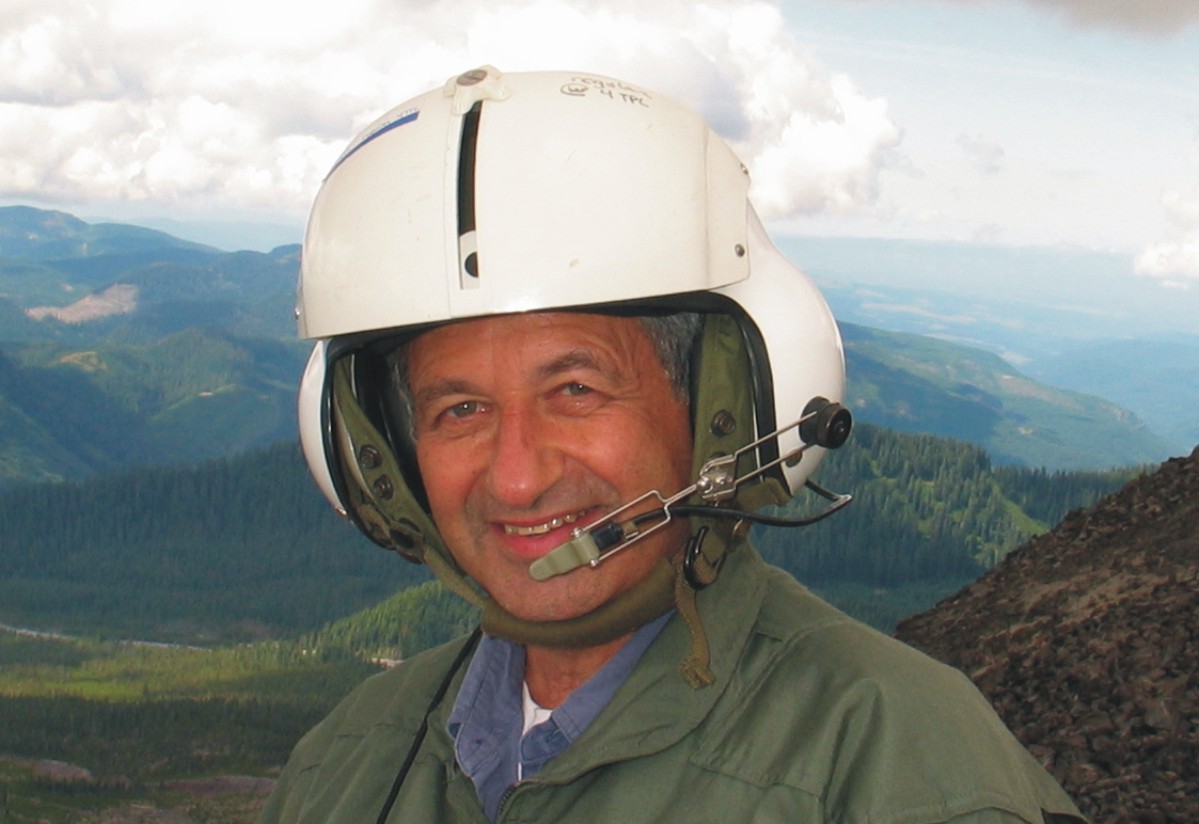Friends' remembrances
Presentation at memorial by Steve Malone.
In Memoriam from Seismological Research Letters, Jan-Feb, 2006
Photos of Tony
Brief Biography of Tony Qamar

Background
Anthony "Tony" Qamar was born in 1943 in Redding, California, and was raised in the Berkeley area. He maintained close contact with his father Ban Qamar, a civil engineer, and the extended Qamar family throughout the world. His grandfather was Max Kleiber, a well-known agricultural researcher in Switzerland and at UC Davis. His mother and stepfather were professional dancers who played many major venues in the U.S. and Europe, opening for acts such as Paul Anka and Tony Bennett. While his parents performed, Tony completed most of his high school studies by correspondence, becoming very interested in science. He held one of his Swiss uncles in high esteem for teaching him classical mathematics. This, in part, led to an interest in physics at Berkeley. He was drawn to the type of science that had immediate applications to public safety and policy, and he earned his PhD in Geophysics at Berkeley. He was a professor in the department of Geology at the University of Montana before joining the faculty at the University of Washington in 1983.Current Position
As a co-Principal Investigator for the Pacific Northwest Seismograph Network Dr. Qamar was involved with almost every aspect of network operations and research, from field work to detailed studies of both tectonic and volcanic earthquakes. He also served as the Washington State Seismologist providing information and consulting to state government and civil authorities on earthquake hazards. His seismic investigations included studies of seismicity of the region, and earthquake hazards. He helped to develop and early version of a web based survey technique for felt earthquakes. He studied the seismicity of Cascade volcanoes and also the seismic signals related to glacier motion. He was instrumental in devloping seismic processing and mapping software and managed the calibration and instrument response database for the network.Dr. Qamar had scientific interests outside traditional seismology. Dr. Qamar was an early leader in doing geodetic measurements in Washington using GPS technology. In cooperation with the Pacific Geoscience Centre in Canada he installed one of the early GPS "tracking" instruments at Neah Bay that detected the slow eastward movement of the west coast due to subduction of the oceanic plate under Washington. Additional collaboration with scientists at Central Washington University and others resulted in the establishment of the "Pacific Northwest Geodetic Array" (PANGA).
Recently, Dr. Qamar was a major contributor to the seismic study of renewed activity at Mount St. Helens. His interest in volcanoes, however, started before the 1980 eruption when he and several colleagues camped on the slopes of Mount St. Helens in the spring of 1980 and operated portable seismic stations and to make simultaneous visual and thermal observations of surface activity. He was highly involved with the recent Mount St. Helens activity contributing significant new data processing proceedures and visual display techiniques. His contributions included his thoughtful insight into both the details of seismograms and the big picture of how volcanoes work. He was a regular participant in group discussions within the PNSN lab and also frequent conference calls and meetings with the staff of the Cascade Volcano Observatory (CVO).
Other interests
Part of Tony's early education was in Europe where he scaled many mountains in the Alps. He continued his interest in mountaineering in California and Canada. He had several first ascents and enjoyed climbing, hiking, backcountry skiing,kayaking & rafting. He especially enjoyed organizing complex outings like raft trips in Alaska and the Grand Canyon with family and friends. He often combined his professional and outdoor recreation interests by taking on the tasks of working on the most remote and inaccessible seismographs such as high on Mount Rainier or in the crater of Mount St. Helens.Tony was also a teacher, both in the classroom (here at UW for a course called Applied Seismology) and more importantly as an advisor and mentor to graduate students. Besides several students for which he was the primary advisor, there were many students and staff who considered him an informal advisor and good friend. He particularly valued informal reflections with graduate students and co-workers, and providing advice on scientific research and career directions. He was never too busy or impatient to take the time to work with someone individually on a problem, big or small, technical or personal. He was the epitome of the team player, willing to help with any type of project and without worrying about credit.
Tony was an easy-going, soft spoken, non-competitive person with a dry sense of humor and a gentle teasing manner. He was good with computers and construction tools and was also the main cook in his household. He took on gardening in recent years. He is survived by his wife Kathleen Ellsbury; daughter Muña Qamar of Brooklyn, NY; half-sister Leanna Briggs of Wendover, Nevada; half-brothers Robert Qamar of Reddin, Connecticut; and Laurence Qamar of Portland, Oregon, and their spouses, and many other family members and friends.
We will remember him most for his thoughtfulness, gentle wit, and his quiet generosity.
We would like to add comments, remembrances and tributes from others to this page. If you have something you are willing to share, including photos, please send an e-mail indicating that its a contribution to be shared with others.
Press Coverage